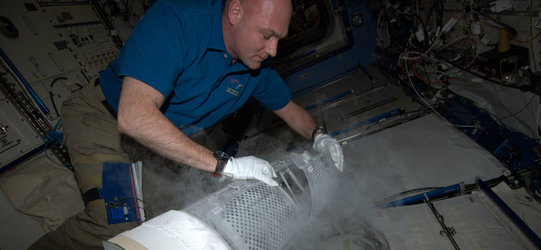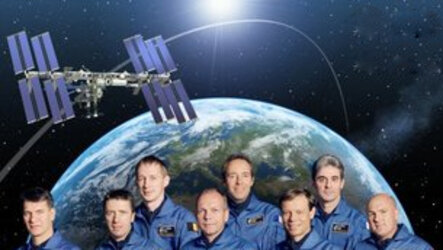Neurospat
ESA astronaut André Kuipers having his brain monitored for the Neurospat session during his mission on the International Space Station in 2012.
Canadian astronaut Chris Hadfield was the fifth and last astronaut to complete the Neurospat experiment, last week. European scientists hope that the results will help to build a new tool for assessing spatial awareness.
ESA astronaut Frank De Winne was the first to have his brain activity recorded, back in 2009. Astronauts Robert Thirsk, Paolo Nespoli and André Kuipers continued the flow of data by having their cerebral cortex placed under scrutiny while on the Space Station.
Living in weightlessness can be very disorienting because Earthly perception of up, down, left or right no longer apply in space. Astronauts’ bodies and brains need to adapt to interpret spatial cues in a different way, in addition to all the stress of spaceflight.
Neurospat records an astronaut’s brain activity while looking through virtual-reality goggles to detect differences in how the brain interprets spatial cues on Earth and in space.
In addition, the data will help to pinpoint which region of our brain is used when we process visual information on the space around us.
The astronauts completed four tasks involving tracking objects, body and object orientation, and navigating. The experiment in Europe’s Columbus laboratory required carefully positioning 62 electrodes on the astronaut’s head.















 Germany
Germany
 Austria
Austria
 Belgium
Belgium
 Denmark
Denmark
 Spain
Spain
 Estonia
Estonia
 Finland
Finland
 France
France
 Greece
Greece
 Hungary
Hungary
 Ireland
Ireland
 Italy
Italy
 Luxembourg
Luxembourg
 Norway
Norway
 The Netherlands
The Netherlands
 Poland
Poland
 Portugal
Portugal
 Czechia
Czechia
 Romania
Romania
 United Kingdom
United Kingdom
 Slovenia
Slovenia
 Sweden
Sweden
 Switzerland
Switzerland


































